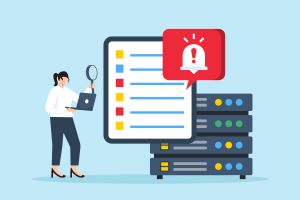In today’s fast-paced business environment, disruptions can occur at any time. Whether it’s a cyberattack, natural disaster, power outage, or public health crisis, businesses are vulnerable to a wide range of threats. Without the right plan in place, these disruptions can severely impact operations, damage your reputation, and result in significant financial losses. By creating a proactive business continuity plan (BCP), your organization can withstand and recover from unexpected events without essential operations shutting down.
From unexpected data breaches to sophisticated cyberattacks, businesses face constant risk in today’s digital world. Effective cyber risk management is crucial for protecting organizational data, maintaining stakeholder and customer trust, and solidifying business continuity. By integrating strong governance frameworks and strategic risk management practices, organizations can address both current threats and future uncertainties, keeping operations secure and resilient.
To keep your application running smoothly and securely over time, consistent application maintenance is essential. Beyond the initial launch, regular updates, performance enhancements, and security patches are crucial to maintaining functionality and adapting to user expectations. As technology evolves, so must your application, staying up to date with the latest advancements and addressing new challenges before they arise.
AI is rapidly transforming software development by automating routine tasks, improving code quality, and enabling faster decision-making. But as AI evolves in exciting ways, it also raises important questions about the future of software development and the role of human developers. In this blog, we’re taking a closer look at how AI is being used, its key benefits, and the potential risks to keep in mind moving forward.
A Disaster Recovery Plan (DRP) is a vital component of any organization’s business continuity strategy. In an increasingly digital world, where downtime and data loss can lead to significant financial and reputational damage, having a well-structured DRP in place is more critical than ever. We’ve created a practical checklist to walk you through the key components of a disaster recovery plan, so your business can quickly recover from unforeseen disruptions.
In today’s digital landscape, threats don’t knock before entering. According to industry reports, cyber attackers can lurk inside networks for an average of 11 days before detection, often only surfacing when damage has already been done. These silent breaches underscore a critical truth: what you don’t know can hurt you.






